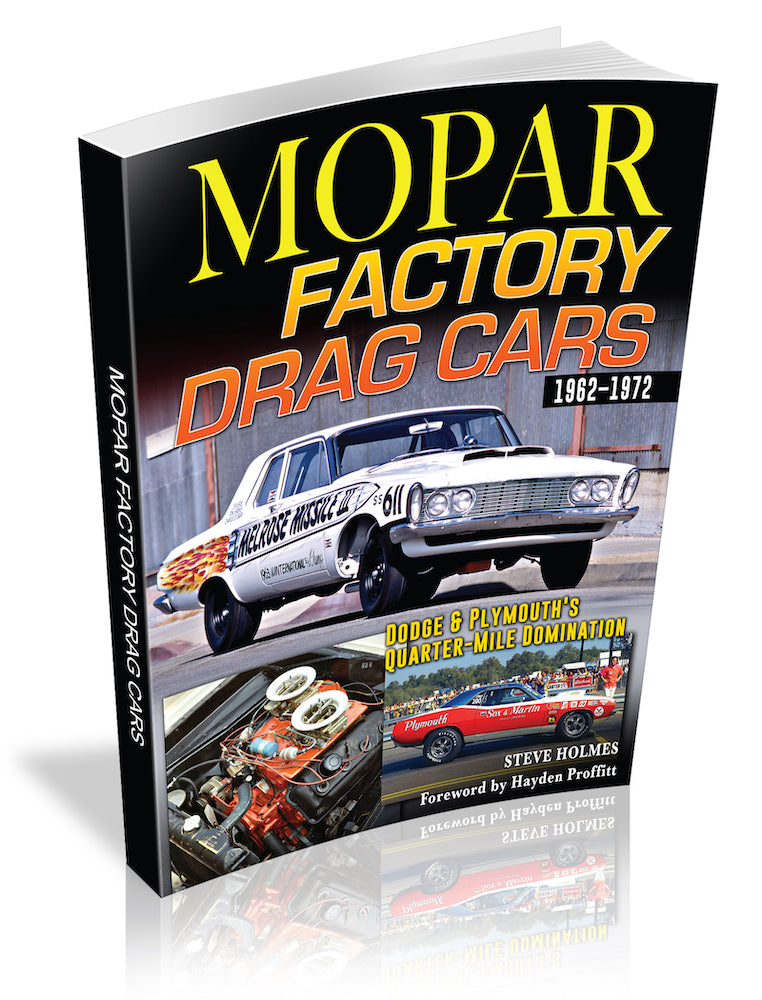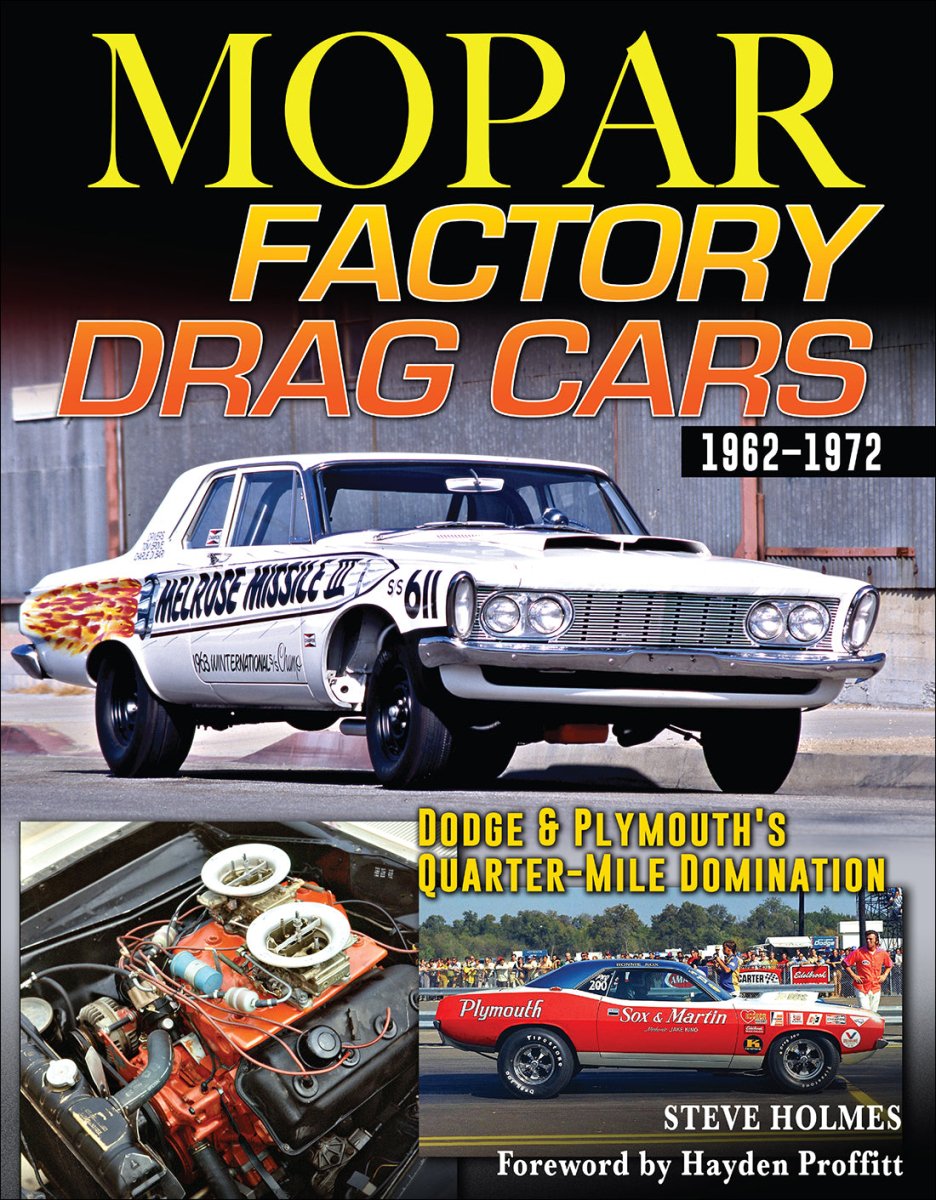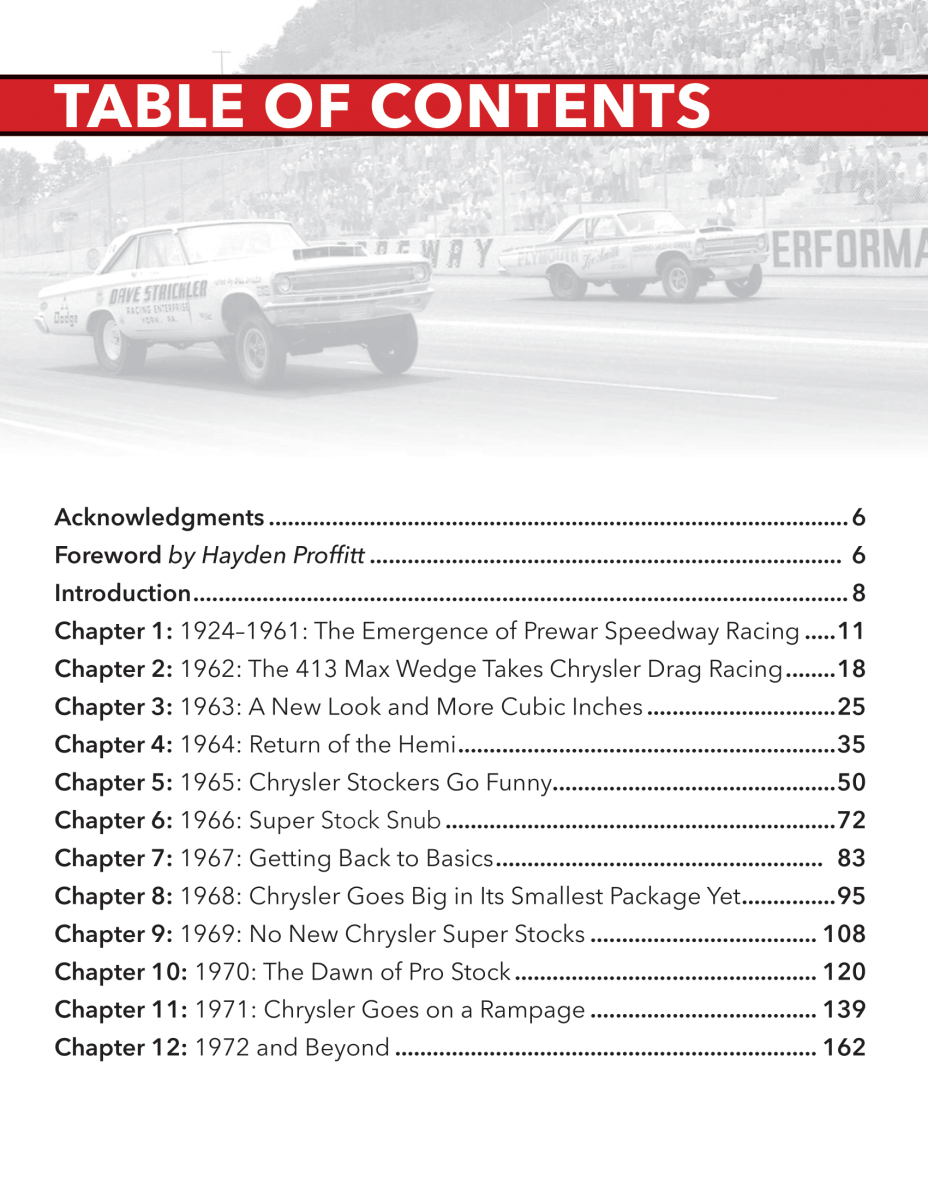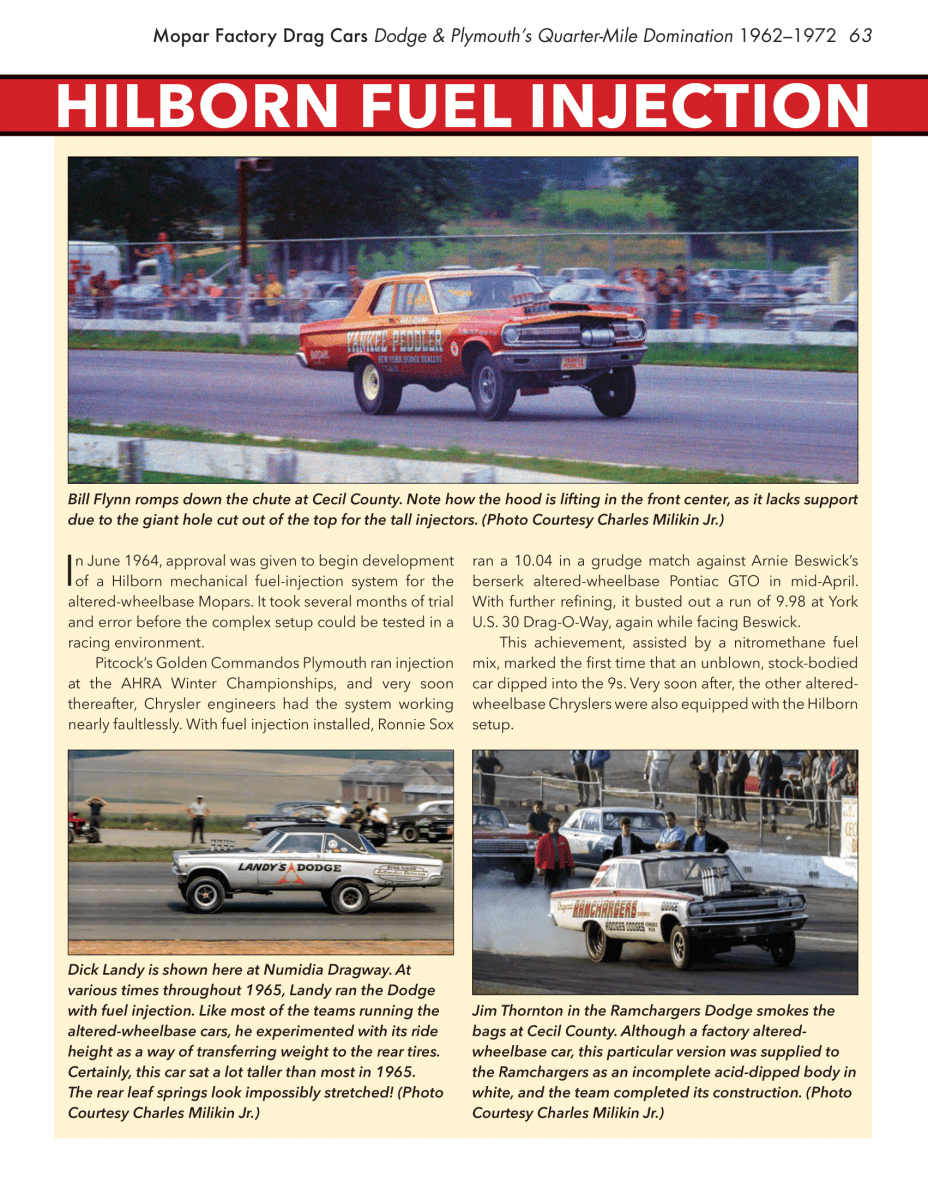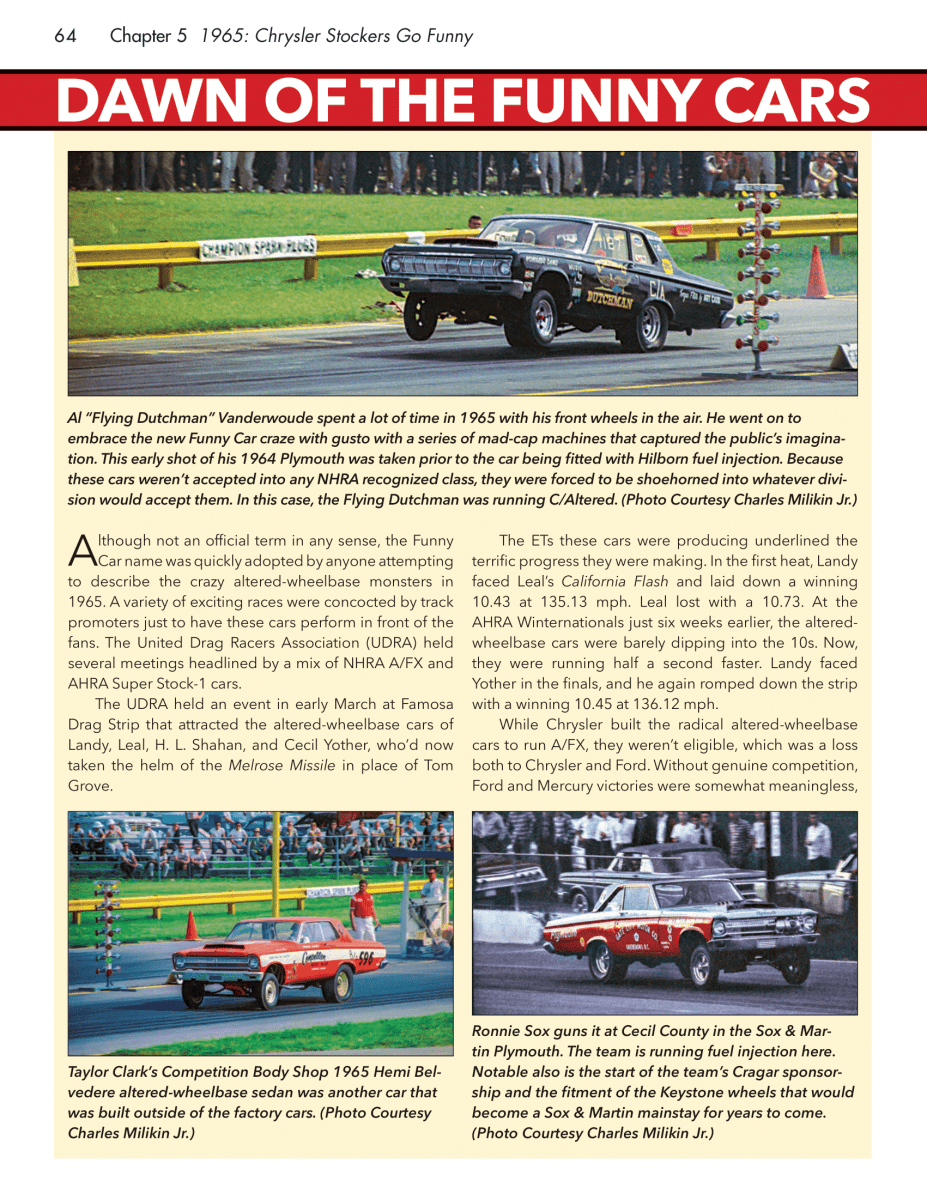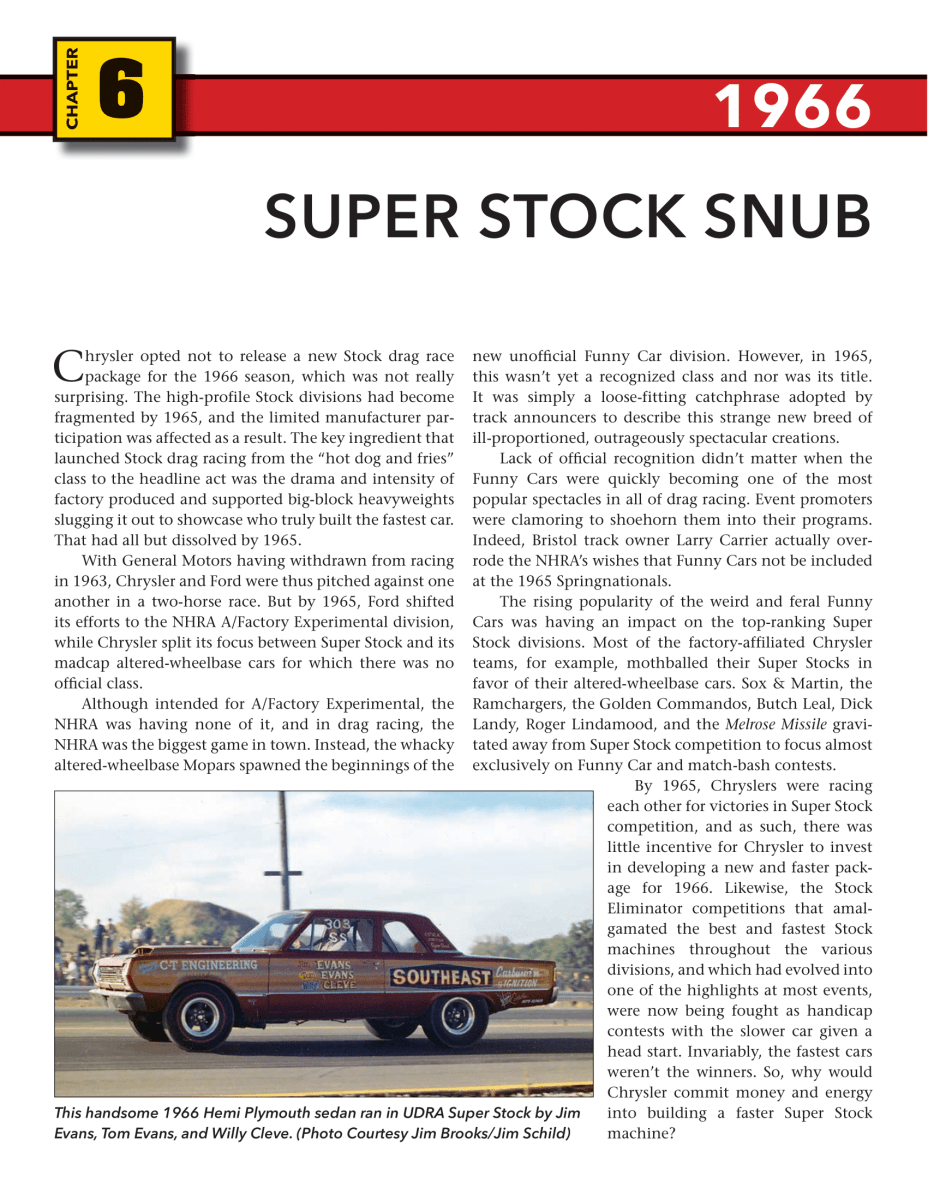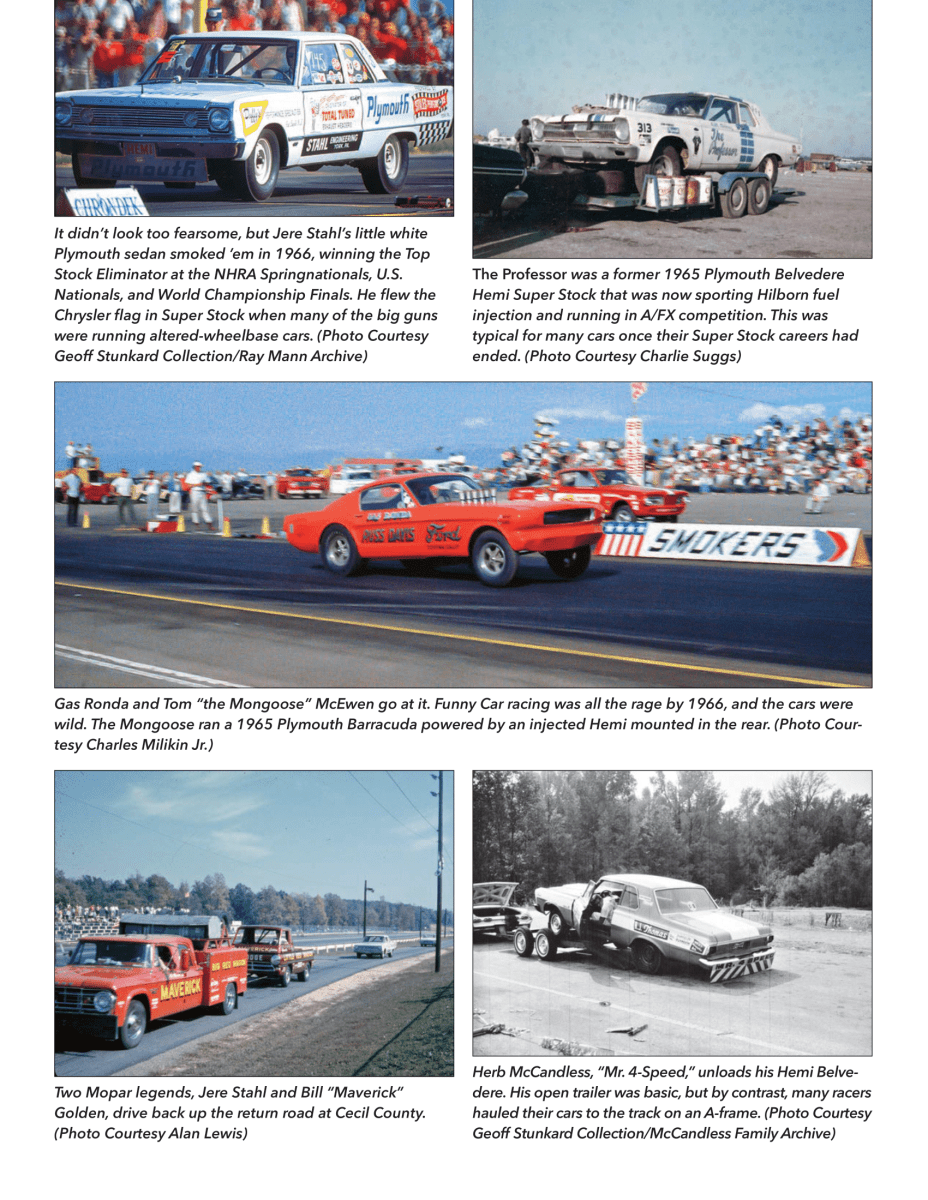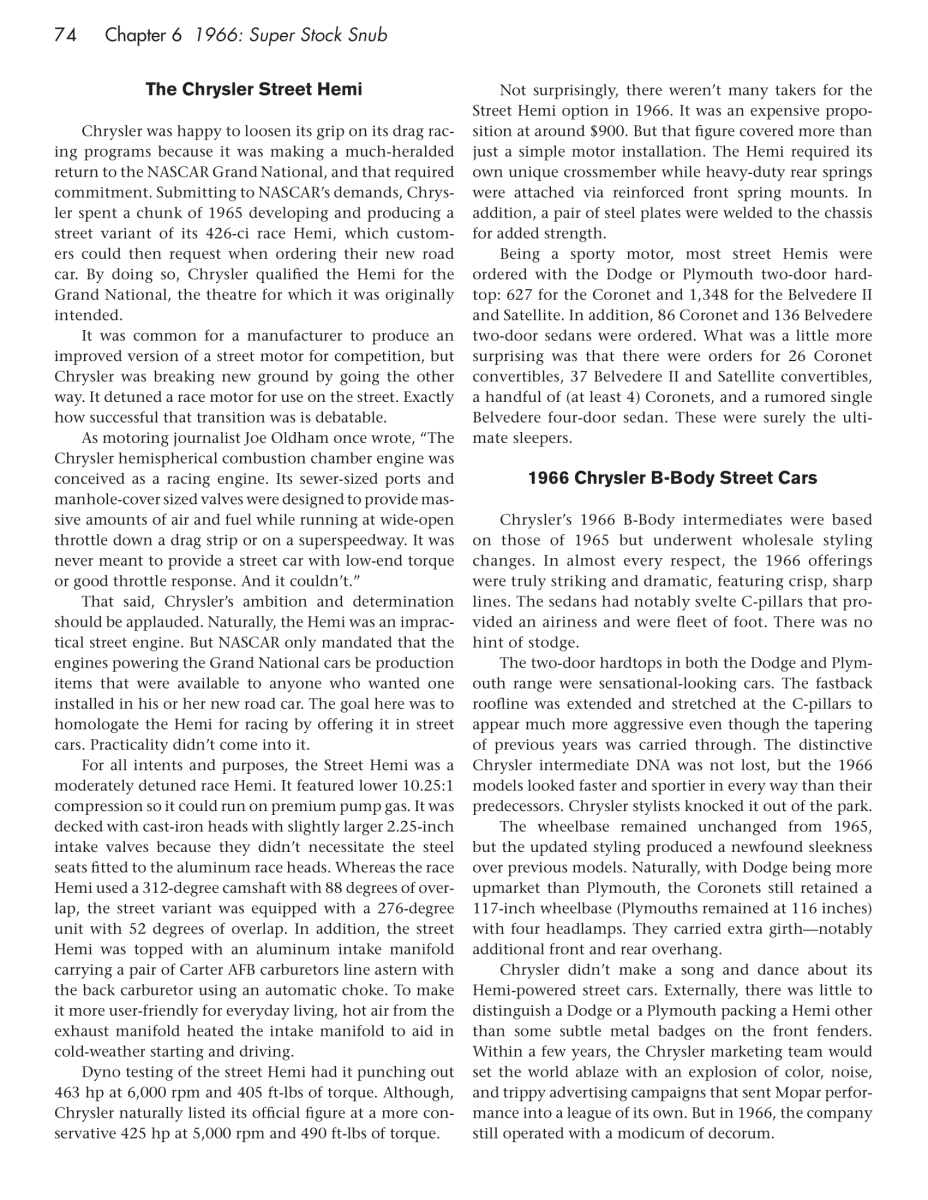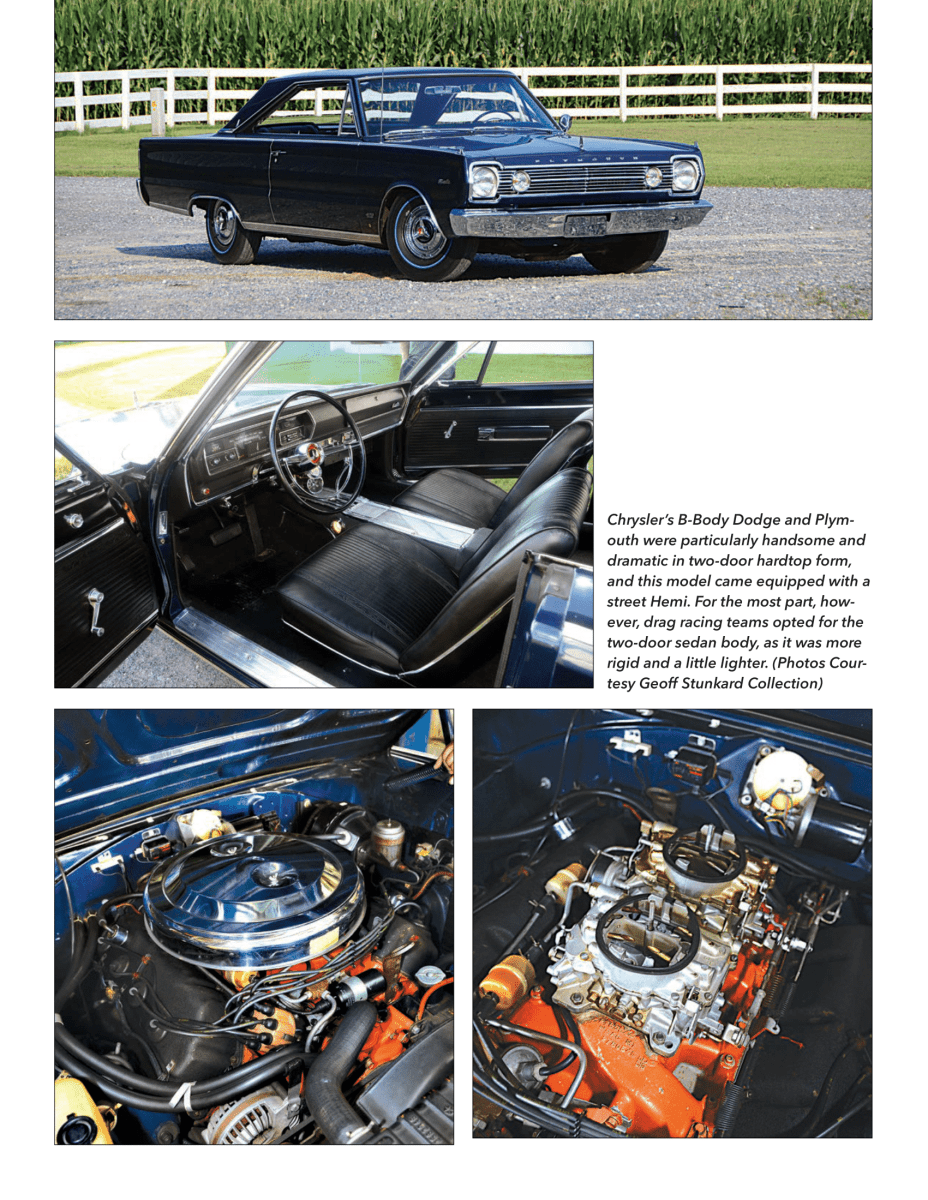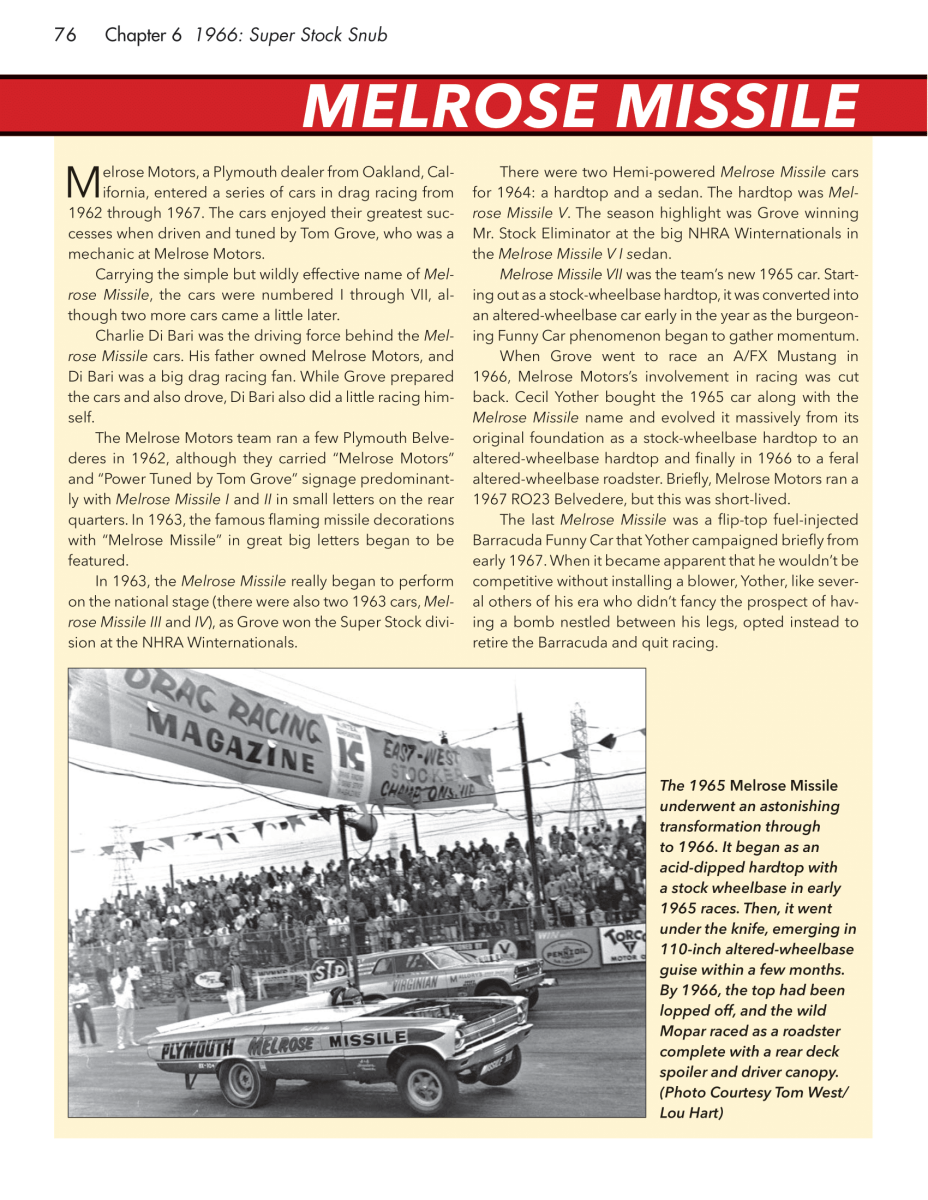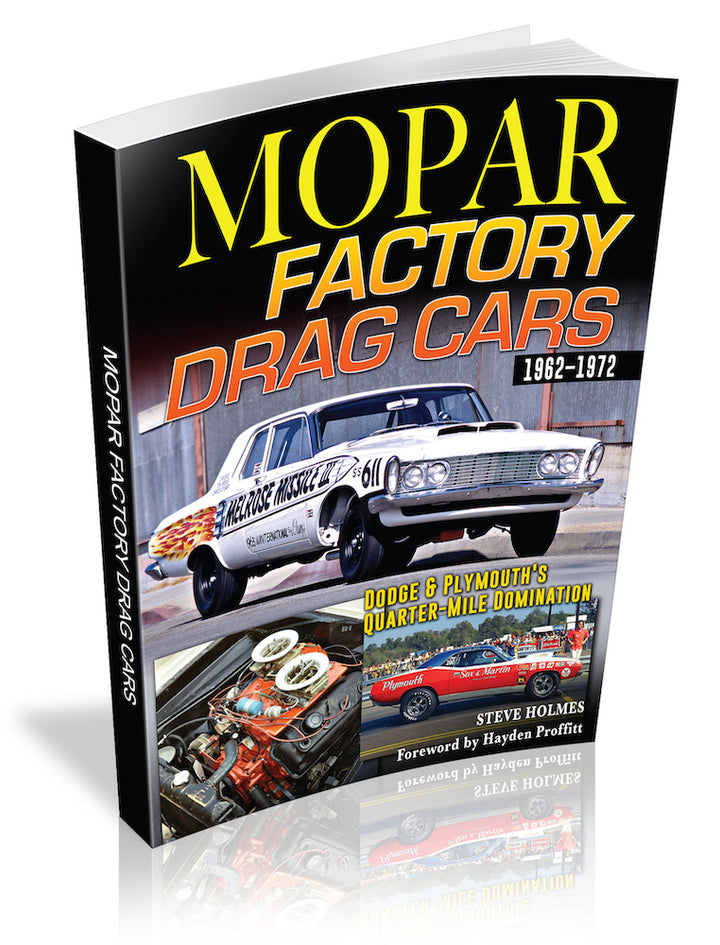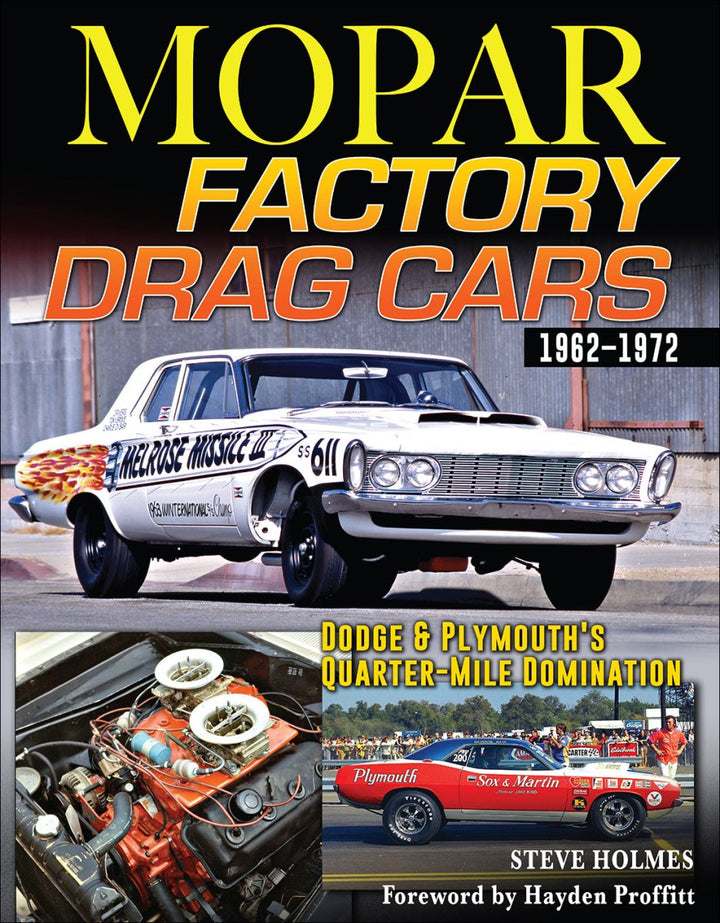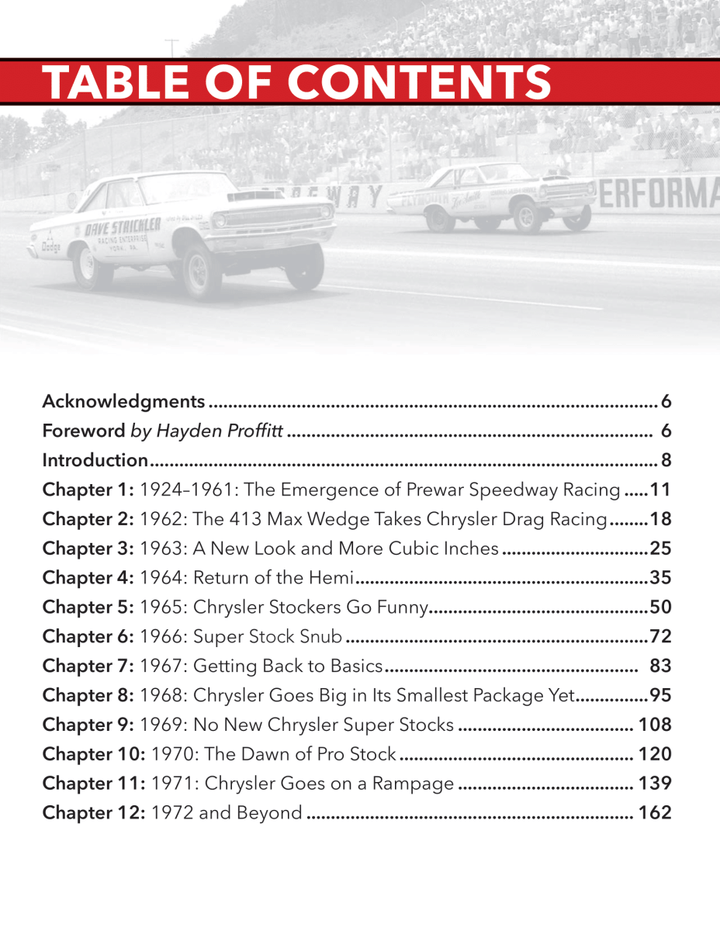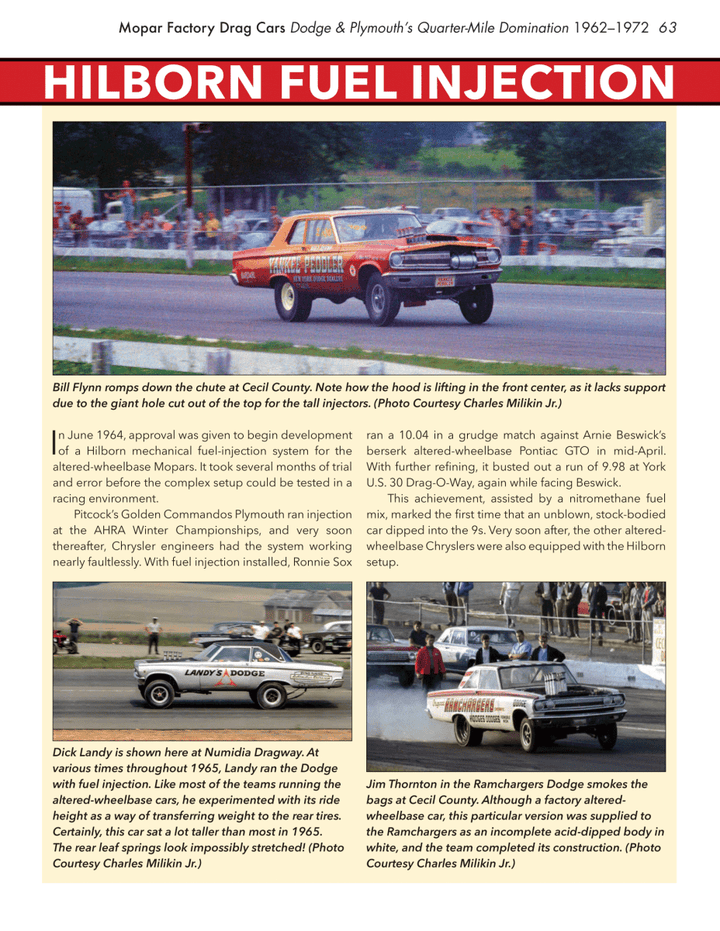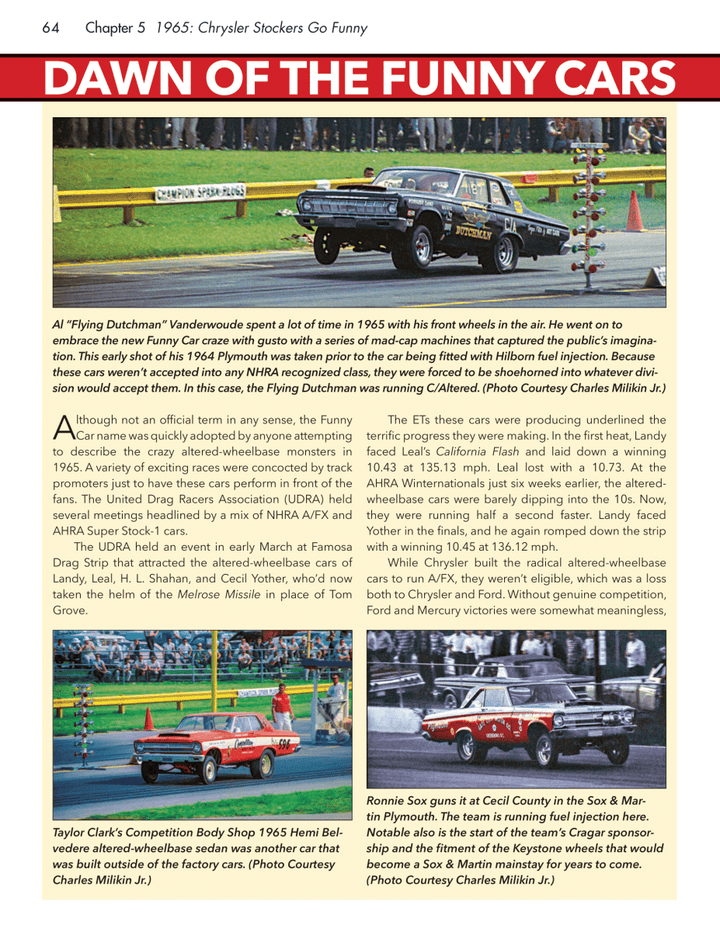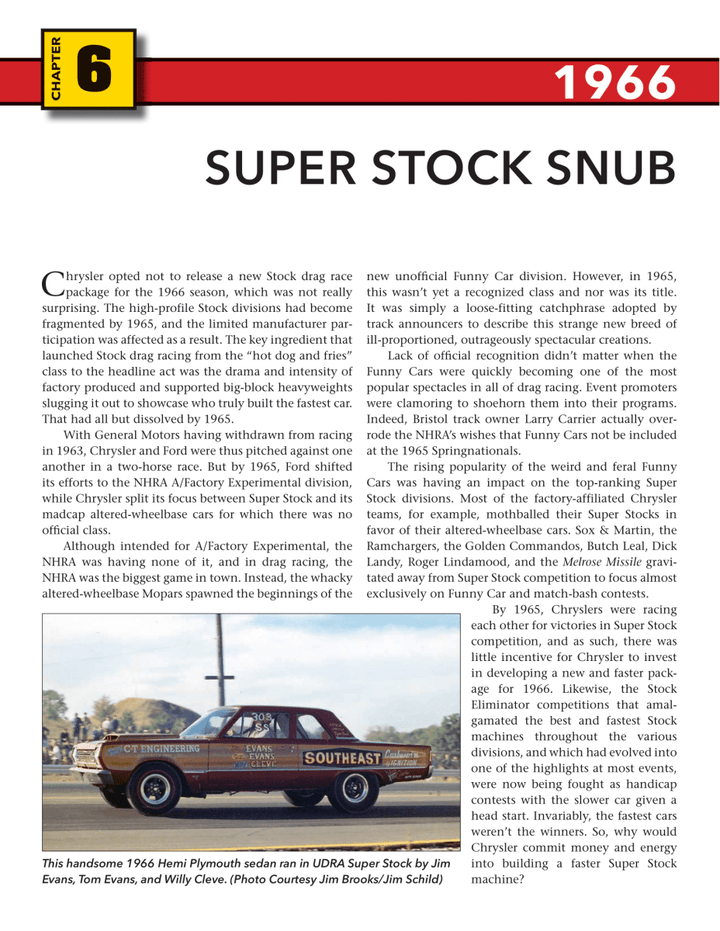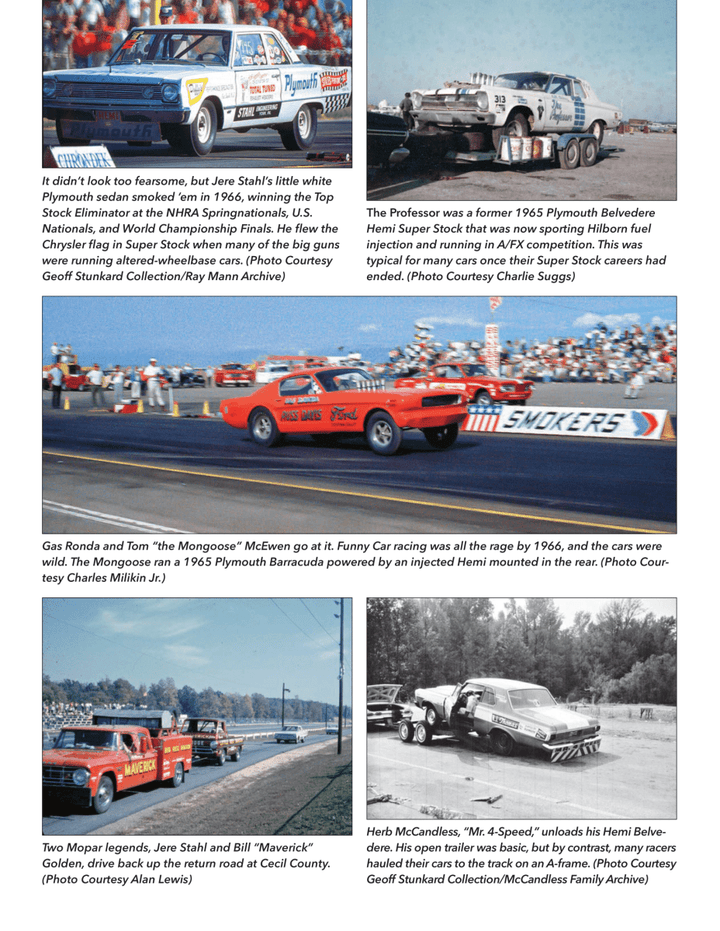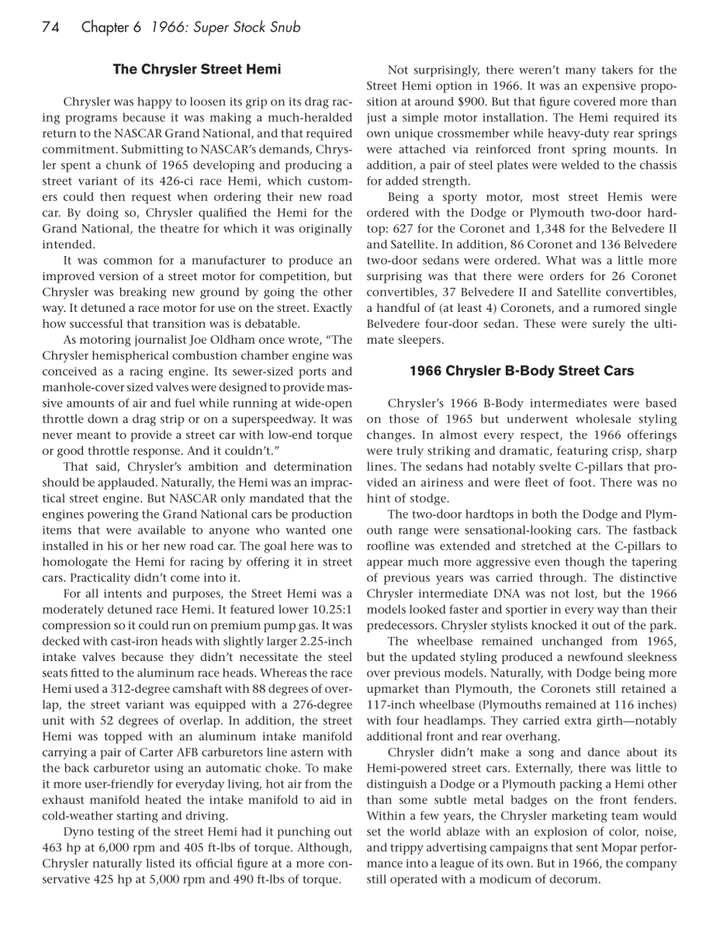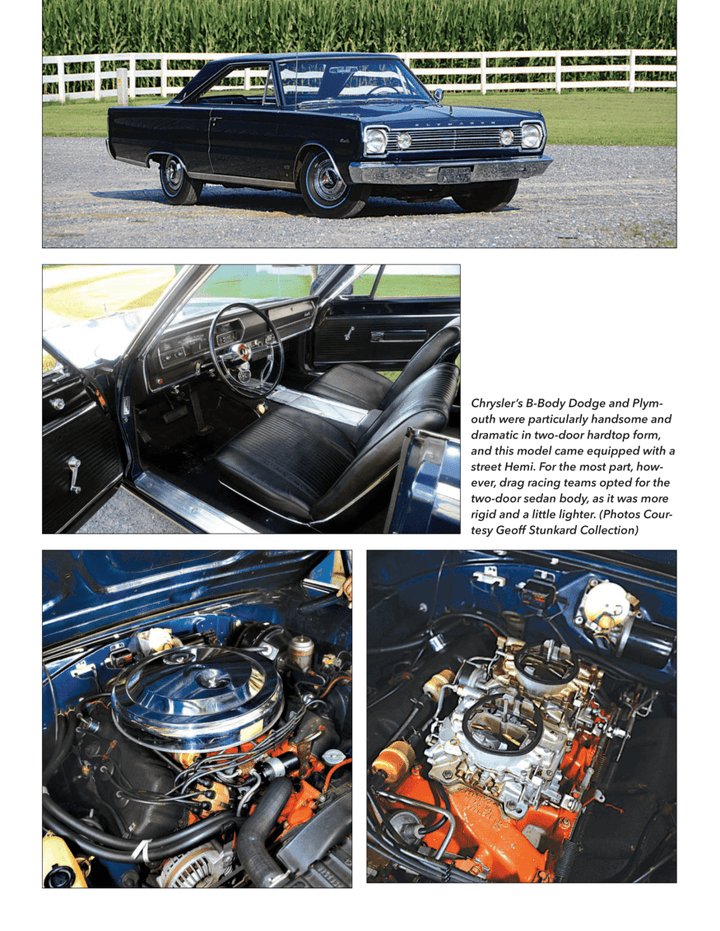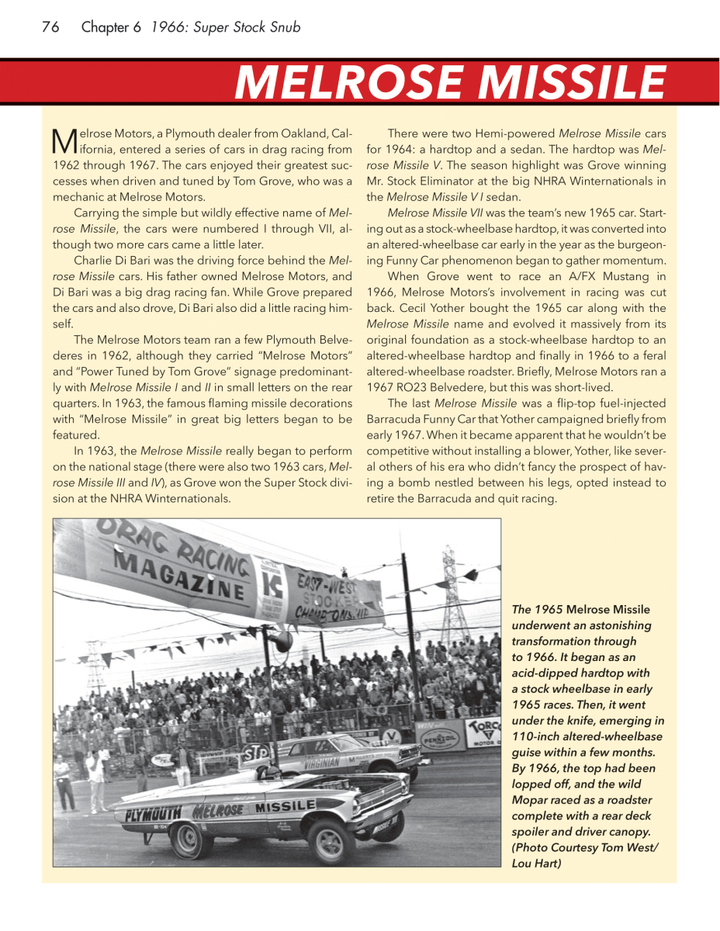Blast down the quarter mile in your favorite 413 Long Ram, 426 Max Wedge, and 426 Hemi in Mopar Factory Drag Cars: Dodge & Plymouth's Quarter-Mile Domination 1962–1972!
Stock-based drag racing throughout the 1960s demanded that the cars competing on the track be genuine production models and that they could be purchased by anyone. The strict regulations dictated total commitment from the manufacturers if they were to be successful. No one was more committed than Chrysler.
Chrysler attacked Stock (Super Stock) drag racing in the 1960s with the same fervor as it did the NASCAR Grand National, which itself spawned the reintroduction of the Hemi engine. Its engineers designed and produced a new factory Super Stock turnkey race car most years throughout the decade and enjoyed absolute success on the track, forever cementing its legendary performance status.
The introduction of Pro Stock in 1970 brought with it exciting heads-up racing with the expectation of producing multiple winners from a variety of brands. Instead, it resulted in total Mopar supremacy, as Hemi-powered Chrysler cars won 12 of the 15 national races throughout the first two years, prompting the NHRA to introduce weight breaks to scupper the Chrysler domination. The new 1972 regulations favored small-block-powered compact cars and were the first major step toward Pro Stock spiraling away from its roots and into the tube-frame silhouette formula seen today.
Racing historian Steve Holmes delves into this fascinating period, capturing the careers of the Ramchargers, Melrose Missile, Bud Faubel, Dick Landy, Sox & Martin, Herb McCandless, Don Grotheer, Motown Missile, and countless others, providing a blow-by-blow account of Chrysler’s factory drag car programs and the incredible cars it produced to trounce its rivals during the most epic era in Stock drag racing history.
Stock-based drag racing throughout the 1960s demanded that the cars competing on the track be genuine production models and that they could be purchased by anyone. The strict regulations dictated total commitment from the manufacturers if they were to be successful. No one was more committed than Chrysler.
Chrysler attacked Stock (Super Stock) drag racing in the 1960s with the same fervor as it did the NASCAR Grand National, which itself spawned the reintroduction of the Hemi engine. Its engineers designed and produced a new factory Super Stock turnkey race car most years throughout the decade and enjoyed absolute success on the track, forever cementing its legendary performance status.
The introduction of Pro Stock in 1970 brought with it exciting heads-up racing with the expectation of producing multiple winners from a variety of brands. Instead, it resulted in total Mopar supremacy, as Hemi-powered Chrysler cars won 12 of the 15 national races throughout the first two years, prompting the NHRA to introduce weight breaks to scupper the Chrysler domination. The new 1972 regulations favored small-block-powered compact cars and were the first major step toward Pro Stock spiraling away from its roots and into the tube-frame silhouette formula seen today.
Racing historian Steve Holmes delves into this fascinating period, capturing the careers of the Ramchargers, Melrose Missile, Bud Faubel, Dick Landy, Sox & Martin, Herb McCandless, Don Grotheer, Motown Missile, and countless others, providing a blow-by-blow account of Chrysler’s factory drag car programs and the incredible cars it produced to trounce its rivals during the most epic era in Stock drag racing history.
Pages : 176
Size : 8.5 X 11 (inches)
Format : Paperback / softback
Illustrations : 304 color & 102 b/w photos
Publisher : CarTech
ISBN : 9781613257227
Product Code : CT688
Acknowledgments
Foreword by Hayden Proffitt
Introduction
Chapter 1: 1924–1961: The Emergence of Prewar Speedway Racing
Chapter 2: 1962: The 413 Max Wedge Takes Chrysler Drag Racing
Chapter 3: 1963: A New Look and More Cubic Inches
Chapter 4: 1964: Return of the Hemi
Chapter 5: 1965: Chrysler Stockers Go Funny
Chapter 6: 1966: Super Stock Snub
Chapter 7: 1967: Getting Back to Basics
Chapter 8: 1968: Chrysler Goes Big in Its Smallest Package Yet
Chapter 9: 1969: No New Chrysler Super Stocks
Chapter 10: 1970: The Dawn of Pro Stock
Chapter 11: 1971: Chrysler Goes on a Rampage
Chapter 12: 1972 and Beyond
Customer Reviews
Based on 1 review
Write a review


